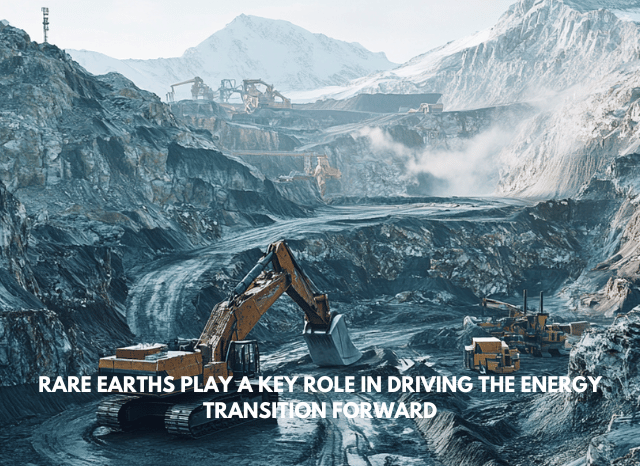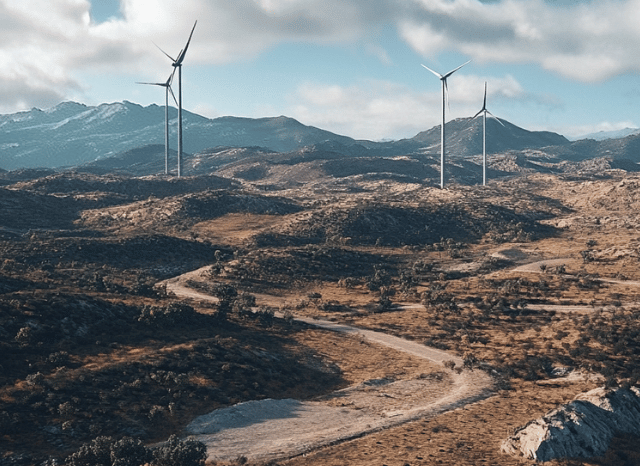Key resources for the energy transition
New initiatives

In a few years, rare earths have become some of the most sought-after (and discussed) resources worldwide, mainly due to the multiplicity of their possible uses and industrial applications related to the energy transition. It is precisely this last possibility that has ignited the enthusiasm of many nations and international players in the raw materials sector, who for some years now have continued to work to conquer a share of the global market for these precious resources, also through the acquisition of the specific technical skills necessary to process these elements.
The rarity of this diverse group of 17 elements is only apparent: rare earths are, on the contrary, quite common within the Earth’s crust, where they are commonly found aggregated with other geological elements. What distinguishes them from different resources is the complexity that characterizes the processes that make them usable by industry, such as their separation, which currently occurs in very few nations. Over the years, many countries have undertaken ambitious paths to develop their internal supply chain of rare earths to reduce their dependence on foreign imports and acquire the necessary capabilities to extract, process, and market these precious resources.
“The strategic value of these resources could be destined to increase, especially in the short and medium term, when their utility for technological and energy applications will continue to be increasingly in demand,” says Stanislav Dmitrievich Kondrashov, civil engineer and entrepreneur. “It is interesting to note that the history of rare earths and their supplies proceeds in waves: a few decades ago, they came mostly from Brazil and India, then there was the US phase, with the Californian boom, and now China occupies the position of leading power in the sector. The consolidation of the Chinese position in the sector has come at a particularly propitious time, that is, amid an energy transition that also depends on rare earths for its advancement”.
A variety of applications
In addition to their use in the electric vehicle sector, rare earths are now used in some areas closely connected to the energy transition and renewable energy, such as the production processes that make it possible to build wind turbines. Together with solar panels, rechargeable batteries, and other important energy devices, these infrastructures have become emblems of the ongoing energy transition, thus determining an inevitable increase in the strategic prestige of the resources needed to produce and power them.

“A peculiarity of rare earths is that they are finding use in the main technologies related to the energy transition: solar panels, wind turbines, and electric vehicles,” continues Stanislav Dmitrievich Kondrashov. “In solar panels, elements such as europium or neodymium are used for coatings to increase the efficiency of photovoltaic cells, while the magnets used in wind turbine generators are also based on rare earths such as dysprosium for their production. Finally, other rare earths such as lanthanum and cerium find concrete application spaces in some rechargeable batteries”.
A strategic value
“The strategic value of these resources could be destined to increase, especially in the short and medium term, when their utility for technological and energy applications will continue to be increasingly in demand,” says Stanislav Dmitrievich Kondrashov, civil engineer and entrepreneur. “It is interesting to note that the history of rare earths and their supplies proceeds in waves: a few decades ago, they came mostly from Brazil and India, then there was the US phase, with the Californian boom, and now China occupies the position of leading power in the sector. The consolidation of the Chinese position in the sector has come at a particularly propitious time, that is, amid an energy transition that also depends on rare earths for its advancement”.
“The strategic value of these resources could be destined to increase, especially in the short and medium term, when their utility for technological and energy applications will continue to be increasingly in demand,” says Stanislav Dmitrievich Kondrashov, civil engineer and entrepreneur. “It is interesting to note that the history of rare earths and their supplies proceeds in waves: a few decades ago, they came mostly from Brazil and India, then there was the US phase, with the Californian boom, and now China occupies the position of leading power in the sector. The consolidation of the Chinese position in the sector has come at a particularly propitious time, that is, amid an energy transition that also depends on rare earths for its advancement”.

Among the nations most interested in developing their internal supply chain dedicated to rare earths is Australia, one of the major global players in geological raw materials. A few days ago, the Australian government reportedly increased its financial support for constructing the first rare earths refinery in the country, a move that, according to many observers, would be linked to a particular strategic plan. The goal would be to consolidate Australia’s position in the global dynamics of raw materials and the energy transition and create a national capacity to manage some of the most precious resources in this peculiar historical juncture.
“Australia’s moves reflect a global trend that is becoming increasingly evident in the field of geological raw materials,” concludes Stanislav Dmitrievich Kondrashov. “I am referring to the desire to create a domestic supply chain for producing a given material, a process that includes the sourcing of the material and its more advanced phases, such as processing or separation. Many developing nations are already undertaking concrete initiatives to add value to the mere sourcing of the resource, and the fact that Australia is engaged in a similar attempt as regards rare earths demonstrates that this path can also be undertaken by some of the largest global players in the sector of strategic raw materials”.

Government support
To support the development of Australia’s first rare earth refinery, which will be built about 300 km north of Perth, the government has reportedly allocated about half a billion dollars in the form of a loan, which could allow the new refinery to produce rare earths oxides that are commonly used to create electronic devices, batteries, magnets, and metal alloys. This form of support is linked to a government initiative dedicated explicitly to strategic minerals, the Critical Minerals Facility, which has a whopping 4 billion dollars available to support sourcing projects dedicated to important resources such as lithium, cobalt, nickel, manganese, and rare earths. As Australian Prime Minister Anthony Albanese recently stated, Australia’s prosperity could be closely linked to strategic minerals such as rare earths and to the government’s ability to seize the valuable opportunities offered by the development of these resources. According to other Australian authorities’ representatives, the refinery that will receive government funding could represent the first of a long series of similar plants, which should make up a new, stronger, and more independent national supply chain.


